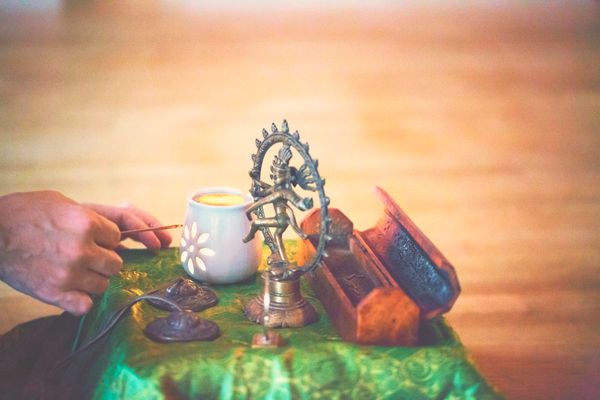For most of my years, I thought life was about learning and growing. But one day as I struggled to drag myself to a yoga class, I realized there were a lot of thoughts and messages getting in the way of my living a happy, healthy life.
My parents did the best they could, but their advice often came from a place of fear, insecurity, and pride.
When I slowed down to listen to these critical, negative voices in my head, I began to realize they'd been programmed into me since childhood. And that as an adult trying to do my best, I often had to quiet or counteract these voices in order to do what I knew in my heart is the right thing for me.
In other words, just as it's important to keep learning, life can also be a series of unlearning what's been wired into us.
Perhaps this isn’t your truth. Maybe you were told you could do and be anything you wanted, and you grew up fearless, determined, motivated, and ambitious. I did not. I understand now that my parents did the best they could, but their advice often came from a place of fear, insecurity, and pride.
So if this sounds like your childhood, feel free to borrow these four examples of what I needed to unlearn so that I could live a happy, healthy life that made sense for me.
Myth #1: Food makes you happy.
Growing up, cookies, cake, ice cream, chips, and popcorn were the reward for just living life. They were the soothing touch for injuries great and small. They were the center of any gathering and the cure for boredom.
New truth: Food is meant to be savored; it's our life force, but it isn't a replacement for love or self-respect. Every single day, I'm learning new things about how important it is to feed my body the nutrients it needs to thrive, that nourishing my body in a way that works for me is more fulfilling than eating for a thrill, to eat when my body tells me to, and to stop when it says so.
Myth #2: Exercise is drudgery.
I didn't come from a Kennedy-esque family who enjoyed a game of touch football on a crisp fall day. No, our cardio was shopping. Exercise was the rope climbing that was forced upon us by sadistic gym teachers. It was a chore. I dabbled in team sports from time to time but when I got bored or it became too difficult, I quit with minimal repercussions.
New truth: I actually like exercise. Sure, I get bored, but instead of quitting I move on to something else. Once boxing became old hat, I tried boot camp. After a few months of Zumba, I started Bollywood dancing. Now my passion is yoga. It’s not always easy, but it sure feels amazing, and always remembering that feeling is great motivation to keep going.
Myth #3: Isolation is good.
When bad things happened at school, my mother let me stay home the next day to avoid the people responsible. So naturally, I began to think that being alone meant being safe.
Even as an adult, if I’m feeling anxious, angry, or sad, my instinct is to find a private space and be alone for hours. But the problem with this approach is that I end up feeling crappier and even less equipped to handle people than when the day began.
New truth: What works to get me out of a slump is antithetical to almost everything I was taught: confront the issue as soon as possible, reach out and talk to a friend, exercise, get outside into the sunshine, be productive, eat well. Come out from the shadows and be part of life.
Myth #4: Asking for help makes you needy and annoying.
Whether because of pride or fear, neither of my parents ever asked for help or guidance when faced with a problem. As a result, things went unfixed, questions were never answered, and we all just white-knuckled it through the unknown.
New truth: It took decades to realize that if I enjoyed sharing my knowledge, time, and stuff with people that maybe others wouldn’t mind either. In fact,maybe they would get something out of helping me. And so, slowly I began reaching out.
If I don’t understand the topic of a dinner conversation, I ask. Whether or not the others judge me, I always learn something new. If I can’t fix something or handle a weird situation, I put out an SOS on social media or call a friend for advice. Not only do I get the help and guidance I need, the person offering that help often gets something out of the interaction as well.
It’s important for me to remember that I did learn some wonderful things growing up that still come naturally to me: laugh every day, creation is part of life, make your home warm and welcoming. But sometimes a happier, healthier life means undoing some of the well-meaning advice we were given. Figure out what works for you, and make an effort to change (or "unlearn") that which doesn't.














 , Ed Catmull brought back the need for candor: “Seek out people who are willing to level with you, and when you find them, hold them close.” Even though he was referring to it in the business setting, he could have as easily been referring to all people in our lives.
, Ed Catmull brought back the need for candor: “Seek out people who are willing to level with you, and when you find them, hold them close.” Even though he was referring to it in the business setting, he could have as easily been referring to all people in our lives.